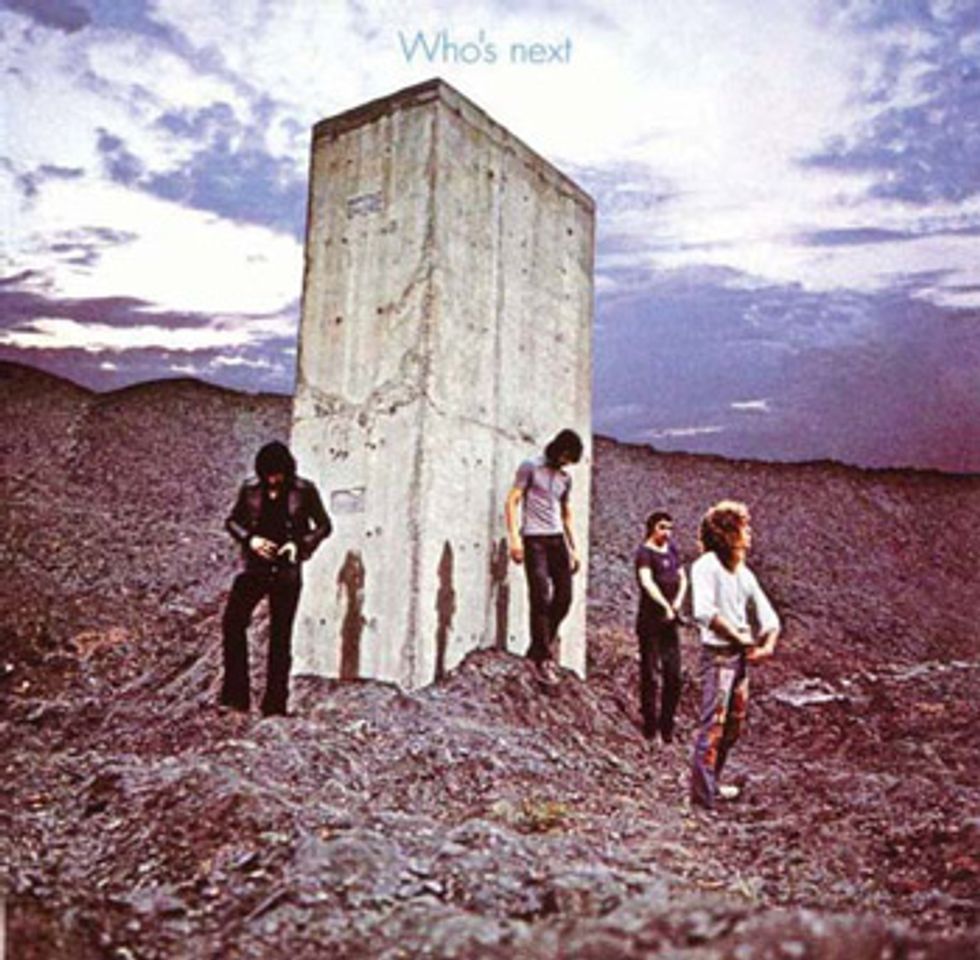 |
As a machinist and toolmaker, Walter was a master, but his avocation was tracking down intangible things, and he was seemingly less successful at that. When he wasn’t creeping through the woods looking for Bigfoot, Walter’s main object of obsession was a very particular guitar tone. Being a Howlin’ Wolf devotee, Walter was captivated by the sound achieved by Wolf ’s guitarist, Willie Johnson, and he was on a crusade to emulate it. As you might suspect, this involved studying photos to try to determine Johnson’s guitar and amp setup, as well as interviewing people who witnessed live shows for clues. Walter’s quest even drove him to try numerous period-correct cheapo guitars on the chance that the photos were red herrings. Still, Johnson’s tone remained elusive to Walter.
Surely, I thought, if Johnson’s sound was to be recreated, the entire signal chain would have to be duplicated. This would entail guitar, cord, amp, microphone, preamp, recording medium, mastering, and pressing— not to mention the listener’s sound system. It seemed that knowing what the instrument sounded like in the room at the time had little to do with what Walter was searching for. It all reminded me of the endless chat about which pickup delivers “the Peter Green sound.” But even there, one question should probably be: Am I interested in sounding like Green or like my stereo system’s rendition of him?
One of my first backstage experiences was during one of the Jeff Beck Group’s early tours. While showing vintage guitars to Beck, I listened to him demo a goldtop Les Paul with P-90 pickups. He sounded pretty much exactly like Jeff Beck. Smiling, he handed me the guitar to play, which I did (nervously) and it sounded . . . exactly like me. The same guitar, the same amp, the same settings. Magic quotient? Zero. This has happened repeatedly over the years. Edward Van Halen’s former tech Zeke Clark once handed me Eddie’s guitar on the VH stage to play—it sounded like me. Standing onstage at the LA Forum, my fingers on Andy Summer’s fretboard with his vast Pete Cornish pedalboard at my disposal— no dice, I couldn’t conjure the Police. This has played out dozens of times with the same result. By now, we’re all tired of hearing the “head, heart, and hands” cliché, but in the end it applies to a very large degree.
Still, there is a component of our gear’s signature that allows our hands to follow the head and heart. In my estimation, it has more to do with a combination of factors, not the least of which is a guitar’s ability to transmit a player’s dynamics to a willing amplifier partner. I’ve had guitars that deliver a singular “tone” that kills, but their ability to let me bend this sound into a dynamic performance is lacking. It’s the give and take, the yin and yang of an instrument’s personality that makes it a “go-to” guitar. Once again, I’ll go out on a limb and say this trait starts with the guitar, and if the guitar ain’t got it, you can’t make a sow’s ear fly. I’m not talking about “good” tone (that’s the subject for a another column). I’m referring to one that lets you enjoy yourself while interacting with the music and other players. Which brings us to another dimension of Walter’s quest for tone.
One of the most distinctive and powerful guitar sounds on record is Pete Townshend’s rhythm work on Who’s Next. I was able to listen to a recording of that album that was broken down instrument by instrument, track by track. I was floored by the naked sound of Townshend’s guitar. It was thin, relatively clean, and not particularly breathtaking. I thought that if I was playing in a tribute band with this tone, I would be disappointed. As I listened, I wondered where the magic had gone. Then, as the track progressed, the magic appeared in the form of a grand piano playing behind the guitar’s changes. Bingo. I experienced the same phenomenon listening to Rocco Prestia in the studio. When his bass part was soloed, I thought, “What’s the big deal?” When I heard it with the drums, I recognized genius.
This lesson tells us that what we perceive to be on a recording sometimes can fool us. When I talk to pro players, we often discuss “finding the slot,” both stylistically and sonically. It’s better to find a sound that makes you comfortable and able to play with your bandmates while taking up only the bandwidth allotted to the guitar’s part of the puzzle. If a guitar’s sound is big enough to stand on its own, there won’t be much room for the song. That’s why it’s important to have an instrument that responds to my musicality as opposed to simply nailing a “tone,” even if it sounds a little thin or weak on its own. It’s the sum of the parts that counts, which is hard to remember when picking out a guitar. I suspect if Walter heard Willie Johnson playing alone in a room, he might suggest a different chord and then continue walking.
Jol Dantzig is a noted designer, builder, and player who co-founded Hamer Guitars, one of the first boutique guitar brands, in 1973. Since then, he has worked or recorded with many of the most talented names in music. Today, as the director of Dantzig Guitar Design, he continues to help define the art of custom guitar.







![Rig Rundown: Russian Circles’ Mike Sullivan [2025]](https://www.premierguitar.com/media-library/youtube.jpg?id=62303631&width=1245&height=700&quality=70&coordinates=0%2C0%2C0%2C0)

















